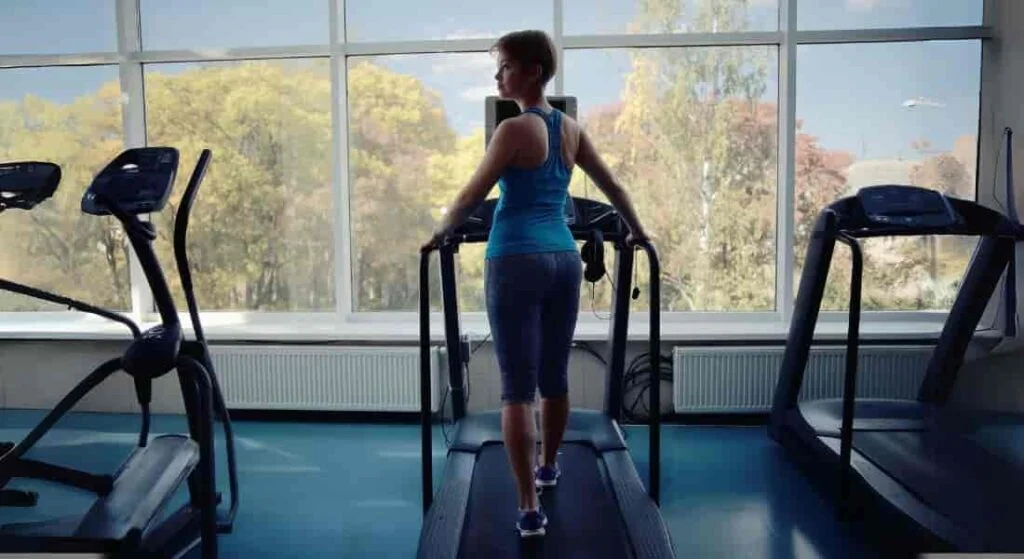
With your busy schedule, you may not have time to prioritize your cardiovascular health. But maintaining good cardio fitness provides immense benefits that directly impact your daily life.
From having more energy to complete tasks efficiently to reducing your risk of heart disease, improving your cardiovascular endurance should be a key component of your overall wellness plan.
This article will provide you with a complete guide on cardiovascular fitness—what it is, why it matters for your health whether you’re a runner or not, and actionable tips to start improving your cardio.
You’ll learn easy ways to incorporate more heart-healthy exercise into your routine to boost energy, longevity, and quality of life. It is just 10 minutes every day, and that will change everything.
What Is Cardiovascular Fitness and Why Is It Important?

Cardiovascular fitness, often called cardiorespiratory or aerobic fitness, signifies the efficiency of the heart, lungs, and vascular system in supplying oxygen-rich blood to the muscles. This vital process occurs during prolonged physical activities like long-distance running or brisk walking spanning 10 to 20 miles.
Having good cardiovascular fitness means your heart and lungs work efficiently, and you have stamina for prolonged exercise. Cardiovascular exercise provides tremendous benefits for your health and longevity. It helps strengthen your heart and also keeps you energetic.
Regular cardio can help reduce the risk of health conditions like high blood pressure, heart disease, diabetes, stroke, and some forms of cancer. Studies show 30 minutes of moderate exercise five times a week can add years to your life.
Benefits of Improving Your Cardiovascular Fitness

Engaging in regular cardiovascular exercise offers numerous benefits beyond just improving endurance. Let’s explore the top ten benefits of cardiovascular fitness and why incorporating it into your lifestyle is crucial for overall health and well-being.
Improved Heart Health
Regular cardiovascular exercise strengthens the heart muscle, enabling it to pump blood more efficiently with each beat. This reduces the resting heart rate and lowers blood pressure, decreasing the risk of heart disease, heart attacks, and strokes.
Increased Lung Capacity
Cardiovascular activities such as running, cycling, and swimming improve lung function by enhancing oxygen exchange and increasing the capacity of the lungs. This leads to better respiratory efficiency, allowing you to perform daily activities with ease and reducing the likelihood of respiratory ailments.
Enhanced Endurance
Engaging in aerobic exercise regularly improves endurance by increasing your body’s ability to utilize oxygen efficiently. As a result, you’ll experience less fatigue during physical activities, whether it’s climbing stairs, playing sports, or simply going about your daily routine.
Weight Management
Cardiovascular exercise is an effective way to burn calories and shed excess body fat. By engaging in activities like brisk walking, jogging, or dancing, you can create a calorie deficit, which is essential for weight loss and weight maintenance. Additionally, regular cardio helps boost metabolism, making it easier to manage weight in the long term.
Better Mood and Mental Health
Cardiovascular workouts stimulate the release of endorphins, often referred to as “feel-good” hormones, which can alleviate stress, anxiety, and depression. Regular exercise has been linked to improved mood, cognitive function, and overall mental well-being, making it a powerful tool for managing mental health conditions.
Enhanced Sleep Quality
Regular physical activity, especially aerobic exercise, promotes better sleep patterns and deeper, more restorative sleep. By expending energy during the day, you can reduce insomnia and improve the quality of your sleep, leading to increased alertness and productivity during waking hours.
Increased Energy Levels
Need an energy boost that lasts all day long? Look no further than the electrifying world of cardiovascular fitness! By revving up your circulation and oxygenating your cells, cardio workouts infuse your body with a surge of unstoppable energy that propels you through even the busiest of days.
Improved Immune Function
Regular moderate-intensity cardiovascular exercise has been shown to enhance immune function, reducing the risk of infections and illness. By stimulating circulation and promoting the movement of immune cells throughout the body, aerobic exercise helps strengthen the immune system’s response to pathogens.
Enhanced Longevity
Numerous studies have demonstrated a strong correlation between cardiovascular fitness and longevity. Individuals who engage in regular aerobic exercise tend to live longer, healthier lives compared to sedentary individuals. By maintaining optimal heart health, managing weight, and reducing the risk of chronic diseases, cardiorespiratory fitness can contribute to a longer lifespan.
Better Quality of Life
At the end of the day, it’s not about the miles you run or the calories you burn; it’s about the joy, vitality, and sheer exhilaration of living life to the fullest. Cardiovascular fitness isn’t just about physical health; it’s about embracing every moment with passion, purpose, and unbridled enthusiasm. Say hello to a life filled with adventure, vitality, and endless possibilities, all thanks to the transformative power of cardio!
How do you Measure Cardiovascular Fitness?

To accurately gauge your level of cardiovascular fitness, various methods can be employed. Tracking your workouts is a simple yet effective way to monitor your progress over time. Recording the type of activity, duration, and intensity levels can help identify trends and improvements.
Utilizing a heart rate monitor ensures that you’re exercising within your target heart rate zone. Alternatively, paying attention to your rate of perceived exertion, using a scale from 1 to 10, allows you to assess your intensity levels. For example, an easy pace corresponds to levels 2 or 3, while an all-out sprint rates closer to 10.
For those seeking more comprehensive assessments, there are more complex tests available. These tests cater to veteran exercisers, professional athletes, or individuals inclined towards competitive events. They provide accurate calculations of metrics such as VO2 max and maximum heart rate, crucial for determining target heart rate zones.
Several fitness bands and smartwatches offer built-in fitness tests and scores, providing convenient options for tracking cardiovascular fitness. Fitbit models with heart rate monitoring provide a cardio fitness score, while Garmin GPS sports watches and some fitness bands report VO2 max.
Additionally, there are simple tests that can be conducted without complex equipment.
3 Minute Step-Test
The 3-Minute Step Test is a straightforward assessment of cardiovascular fitness. Using a 12-inch step and a metronome or stopwatch, you step up and down for three minutes. Once you’ve completed the challenge, take a moment to catch your breath and then sit down to measure your heart rate for a full minute.
Count each beat like you’re tapping along to your favorite tune. For an extra dose of tech-savvy flair, consider using a heart rate monitor or app to track every beat with precision. Now, here’s where it gets interesting. Refer to the charts below to see how you stack up against age and gender benchmarks. It’s your chance to gauge your cardio prowess and celebrate your progress like a true champion.
So, why not give it a try? The 3-Minute Step Test offers a fun and accessible way to tune into your cardiovascular fitness, all from the comfort of your own home. It’s your time to step up and show your heart some love!
| Ratings for Women Based on Age | 18-25 | 26-35 | 36-45 | 46-55 | 56-65 | 65+ |
| Excellent | 52-81 | 58-80 | 51-84 | 63-91 | 60-92 | 70-92 |
| Good | 85-93 | 85-92 | 89-96 | 95-101 | 97-103 | 96-101 |
| Above Average | 96-102 | 95-101 | 100-104 | 104-110 | 106-111 | 104-111 |
| Average | 104-110 | 104-110 | 107-112 | 113-118 | 116-121 | 116-121 |
| Below Average | 113-120 | 113-119 | 115-120 | 120-124 | 119-127 | 123-126 |
| Poor | 122-131 | 122-129 | 124-132 | 126-132 | 129-135 | 128-133 |
| Very Poor | 135-169 | 134-171 | 137-169 | 137-171 | 141-174 | 135-155 |
| Ratings for Men Based on Age | 18-25 | 26-35 | 36-45 | 46-55 | 56-65 | 65+ |
| Excellent | 50-76 | 51-76 | 49-76 | 56-82 | 60-77 | 59-81 |
| Good | 79-84 | 79-85 | 80-88 | 97-93 | 86-94 | 87-92 |
| Above Average | 88-93 | 88-94 | 88-95 | 95-101 | 97-100 | 94-102 |
| Average | 95-100 | 96-102 | 100-105 | 103-111 | 103-109 | 104-110 |
| Below Average | 102-107 | 104-110 | 108-113 | 113-119 | 111-117 | 114-118 |
| Poor | 111-119 | 114-121 | 116-124 | 121-126 | 119-128 | 121-126 |
| Very Poor | 124-157 | 126-161 | 130-163 | 131-159 | 131-154 | 130-151 |
The Rockport Walk Test
The Rockport Walk Test is a simple yet effective method for assessing cardiovascular fitness. It involves briskly walking one mile and monitoring heart rate and completion time. Results are calculated using age, gender, weight, time, and post-exercise heart rate. Lower times and heart rates indicate better fitness. Regular testing allows for tracking improvements over time. It’s suitable for various fitness levels and ages, offering valuable insights into cardiovascular health.
Treadmill Tests

Treadmill tests, often administered by professionals in gym settings or clinical labs, are valuable tools for determining cardiovascular fitness. These tests involve working up to high intensities while closely monitoring various physiological parameters.
Graded Exercise Test (GET)
The Graded Exercise Test is a comprehensive assessment performed on a treadmill. It involves a series of intervals where the intensity gradually increases. Throughout the test, key physiological responses such as heart rate, blood pressure, and perceived exertion are closely monitored. This fitness test will help you determine the extent of your cardiovascular power and grade your overall fitness level.
Related: Must-Do Cardio Exercises For Runners
Bruce Protocol Test
The Bruce Protocol Test is another widely used treadmill test for assessing cardiovascular fitness. Participants walk or run on the treadmill, gradually increasing the incline and speed at specific intervals. Throughout the test, heart rate, blood pressure, and perceived exertion levels are meticulously monitored. The Bruce Protocol Test offers valuable data on an individual’s cardiovascular endurance and can help in devising tailored fitness plans.
How to Improve Cardio Fitness
Boosting your cardio fitness is all about taking small steps towards a healthier, happier you. Here’s how you can make your heart stronger and your body more energetic:
Take It Easy with Steady-State Training
Start with a simple walk or a gentle jog for at least 20 minutes. It’s like giving your heart and lungs a little workout to make them stronger. As you get more comfortable, you can pick up the pace and go a little longer. Before you know it, you’ll be feeling fitter and more confident.
Mix It Up with Interval Training
Imagine doing short bursts of intense exercise, like running as fast as you can for a minute, followed by a minute of walking to catch your breath. This kind of training helps your body get stronger and burn more calories. Try doing it once or twice a week to see the best results.
Find Your Balance with Different Workouts
Don’t stick to just one type of exercise. Mix things up by trying different activities throughout the week. You could go for a bike ride one day, do some jumping jacks the next, and maybe even dance around your living room. The key is to keep moving and have fun while you’re doing it.
Is walking a Good Cardio Workout?
Walking engages your heart, lungs, and large muscle groups, making it an excellent choice for aerobic exercise. It gets your heart pumping and your blood flowing efficiently throughout your body, improving circulation and oxygen uptake.
Contrary to popular belief, you don’t need to break into a sprint to reap the rewards of cardio. Brisk walking challenges your cardiovascular system, elevating your heart rate and increasing oxygen delivery to your muscles.
To maximize the cardiovascular benefits of walking, aim to maintain a pace that feels challenging but sustainable. Incorporating interval training, where you alternate between periods of brisk walking and recovery intervals, can further elevate your heart rate and boost calorie burn.
Target Heart Rate Zone
To improve your cardiovascular fitness through walking, aim for a target heart rate zone of 50 to 70 percent of your maximum heart rate. If you want to know your maximum heart rate then you can simply calculate it by subtracting your age from 220.
For example, if you are 50 years old, then your maximum heart rate is 170 beats per minute, because 220 – 40 = 170 beats per minute (bpm). Your target zone would be 90 to 126 bpm (50 to 70 percent of 170). Use a heart rate monitor to track your heart rate as you walk and adjust your speed and intensity to stay within your target zone.
Increasing Intensity
There are several ways to increase the intensity of your walking workout to reach your target heart rate zone. Walk at a brisk pace, around 3 to 4 miles per hour. Include intervals where you walk at an even brisker pace for 1 to 2 minutes, then recover at your normal walking pace. Walk up hills or increase the incline on a treadmill. Swing your arms for momentum. Add weights to your walk, like wrist weights or a weighted vest.
Duration and Frequency
For the best cardio results, aim for at least 30 to 60 minutes of walking most days of the week at an intensity that keeps your heart rate in your target zone. Start with 3 days a week and build up as your endurance improves. Be sure to stretch and hydrate before and after your walking workout. With regular cardio walking, you can significantly improve your heart health, increase your stamina, and potentially lose weight.
Keep this in Mind
When it comes to boosting your cardiovascular fitness, it’s essential to find the right balance. While consistency is key, pushing yourself too hard can lead to overtraining, which can hinder your progress and even lead to injury.
One of the biggest culprits of overtraining is not giving your body enough time to recover between workouts. Remember to schedule rest days or incorporate lighter activities like walking to give your muscles a chance to repair and rebuild. Adequate rest is crucial for preventing burnout and ensuring that you’re ready to tackle your next training session.
In addition to rest, pay attention to other factors that can contribute to overtraining, such as nutrition and sleep. Not fueling your body properly or skimping on sleep can leave you feeling drained and more susceptible to overtraining.
Keep an eye out for signs that you may be pushing yourself too hard, such as feeling agitated, having trouble sleeping, or experiencing a loss of appetite. If you notice these symptoms, it’s important to listen to your body and take a step back. Taking at least a week off from intense or prolonged training can help prevent overtraining and keep you on track toward your fitness goals. Remember, it’s better to take a break now than to risk sidelining yourself with an injury later on.
